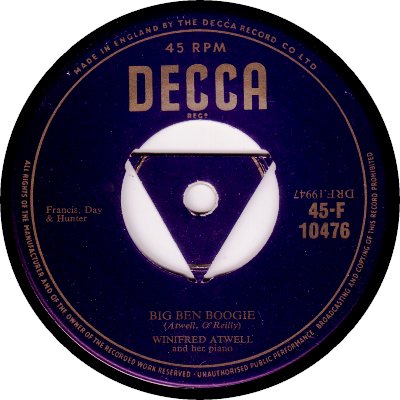
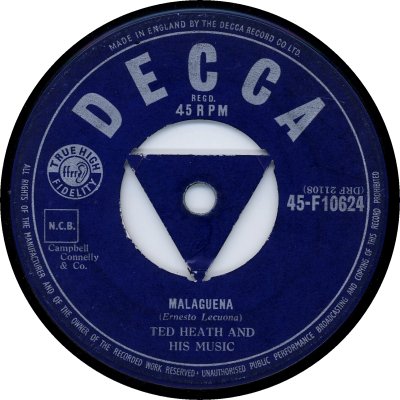
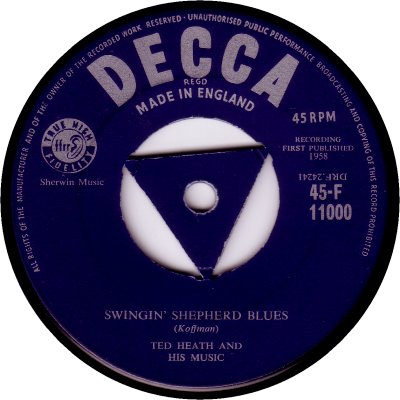
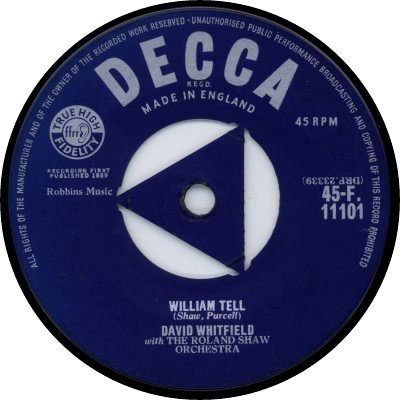
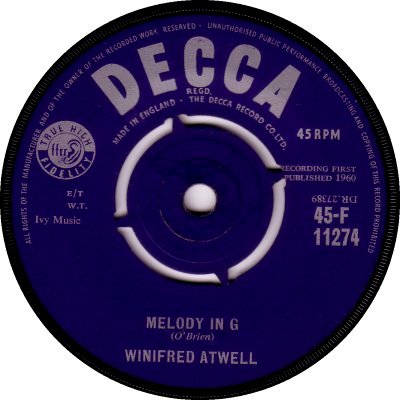
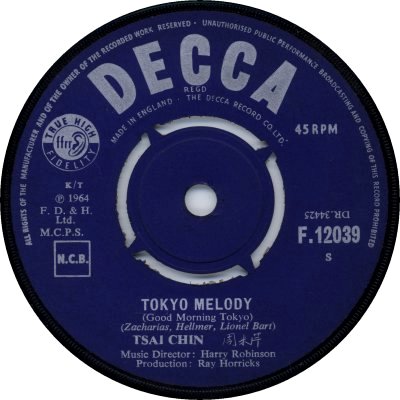
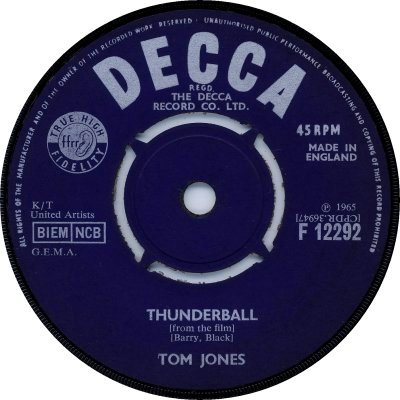
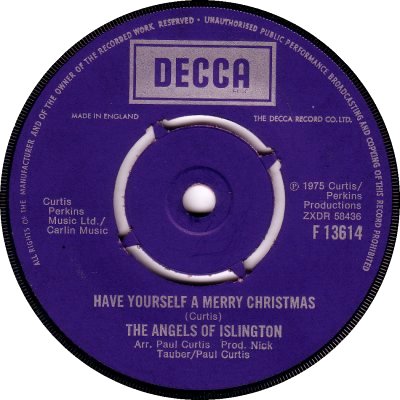

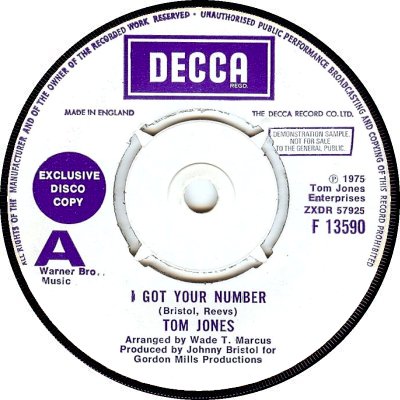

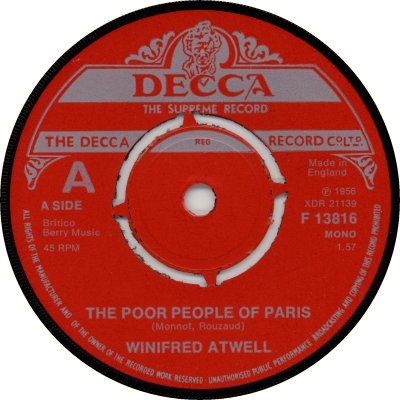
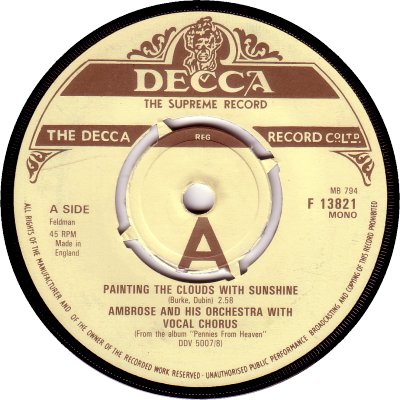

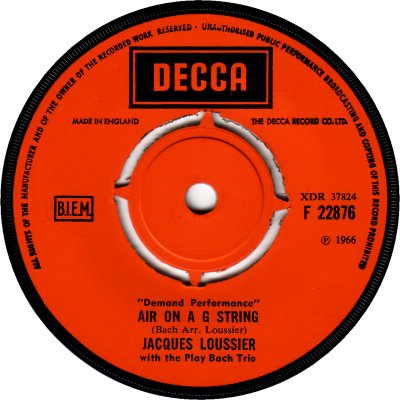
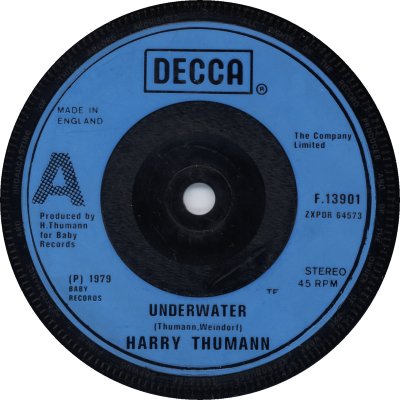
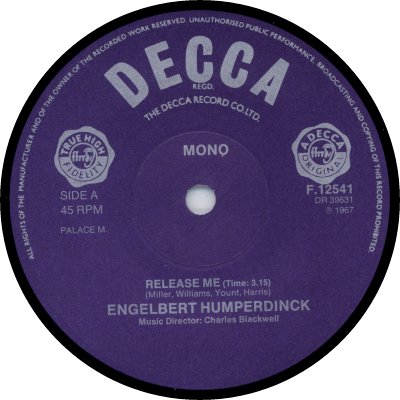
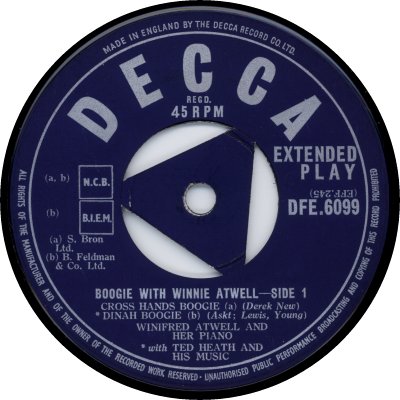
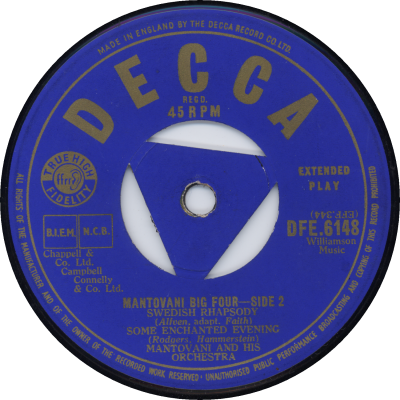
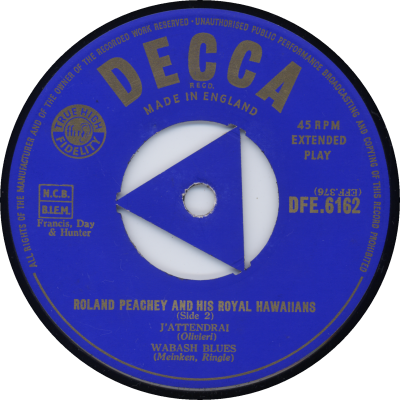
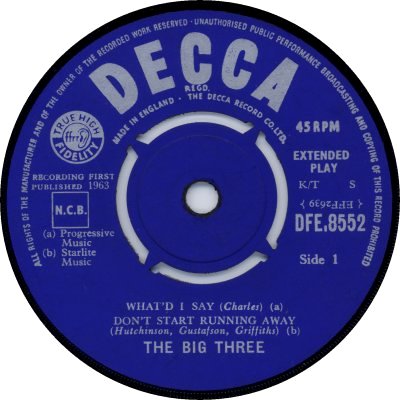
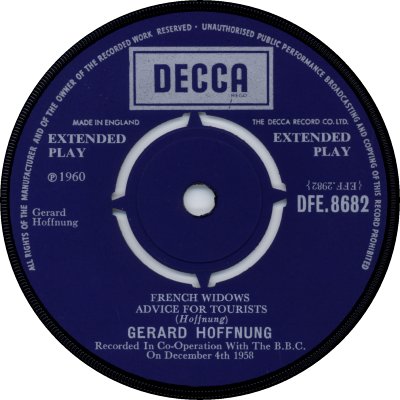
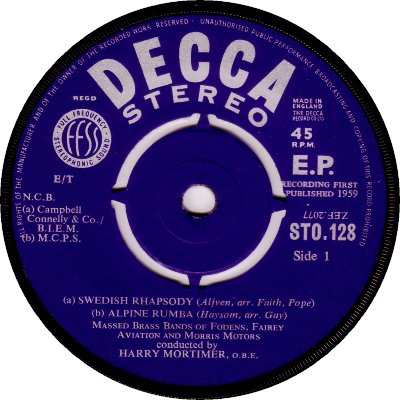

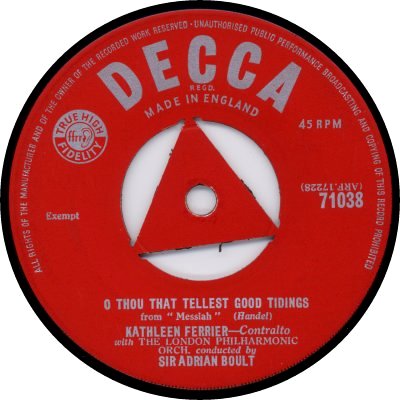
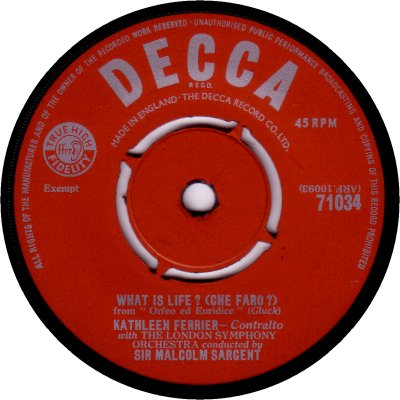
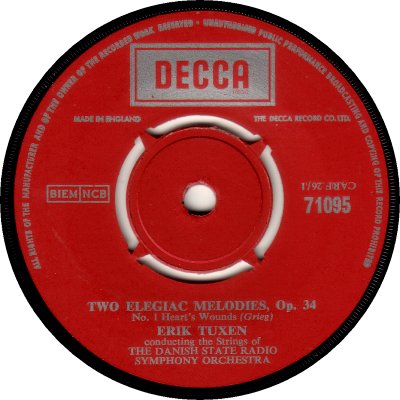
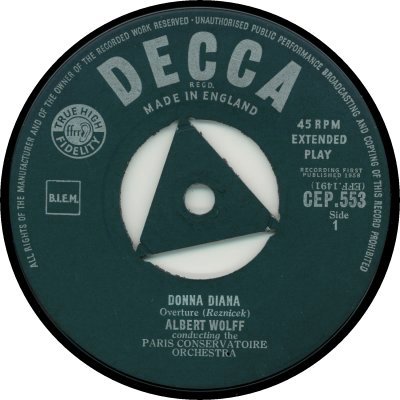
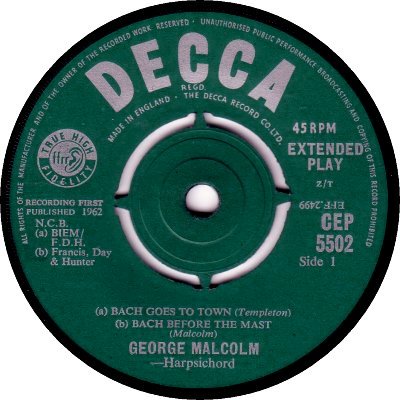
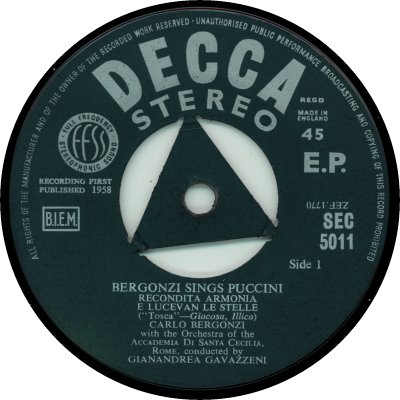
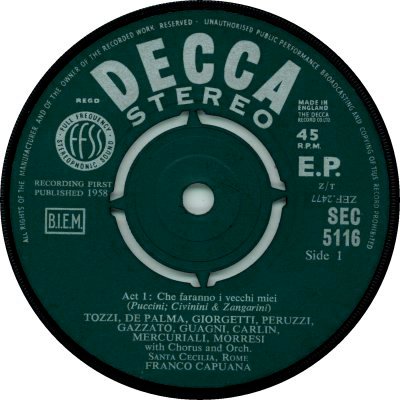
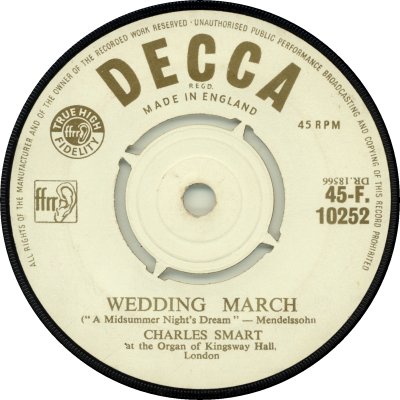
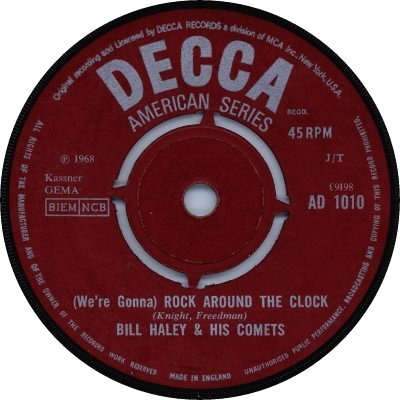
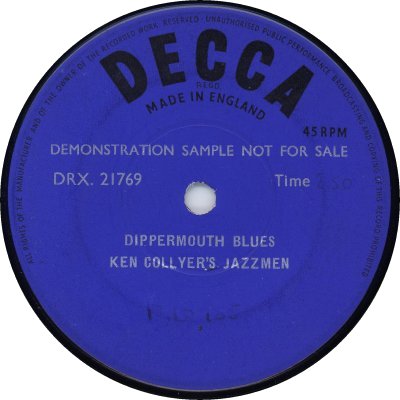
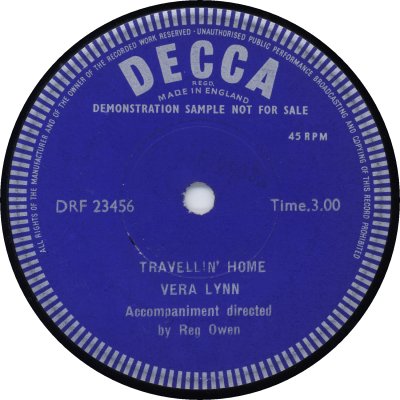



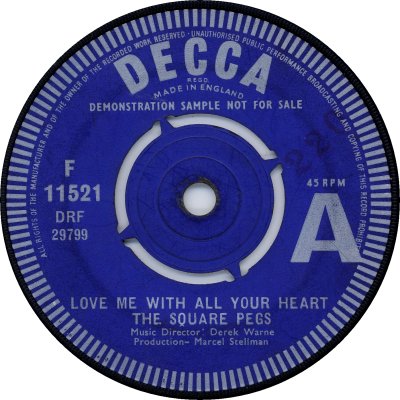
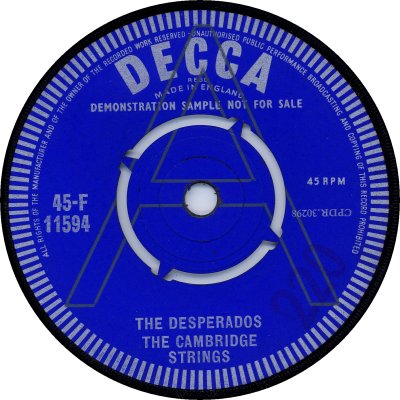
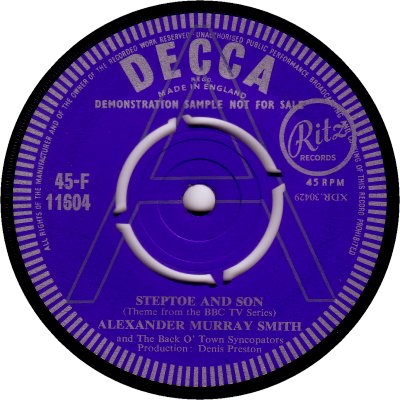
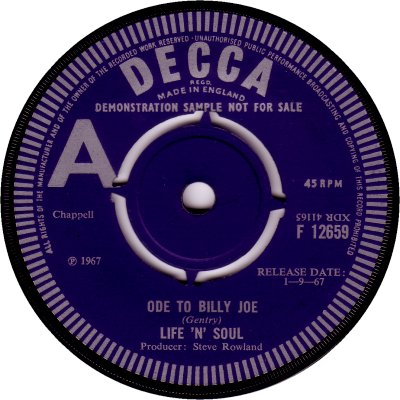
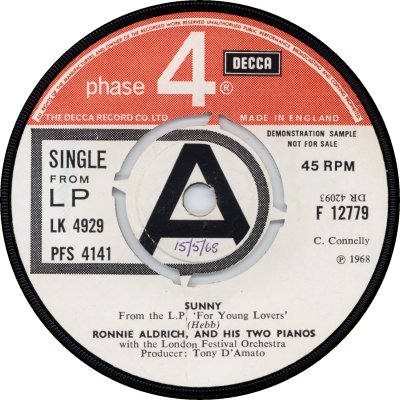
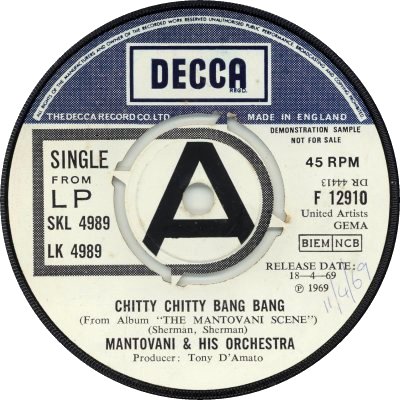
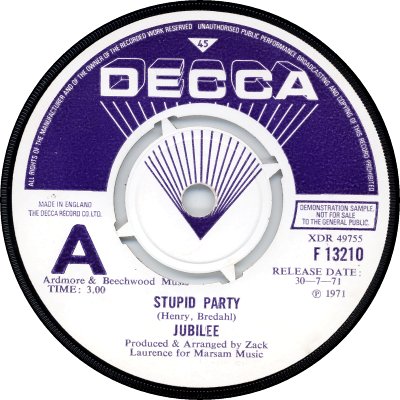

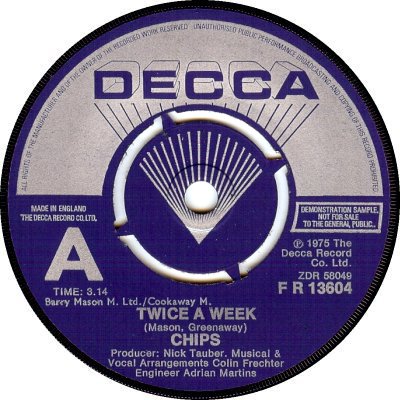
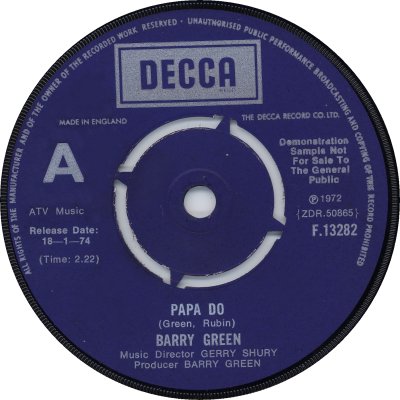
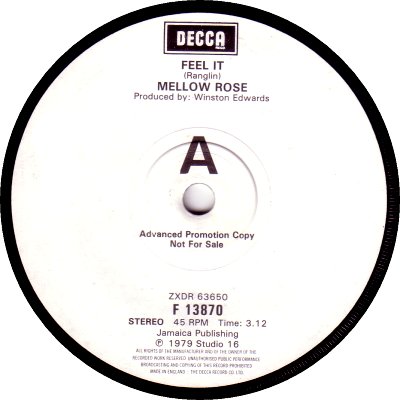
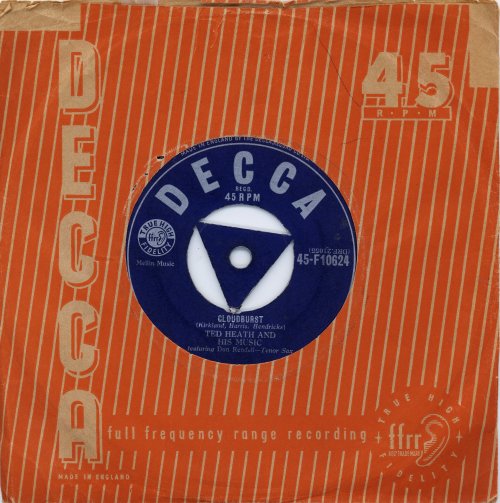
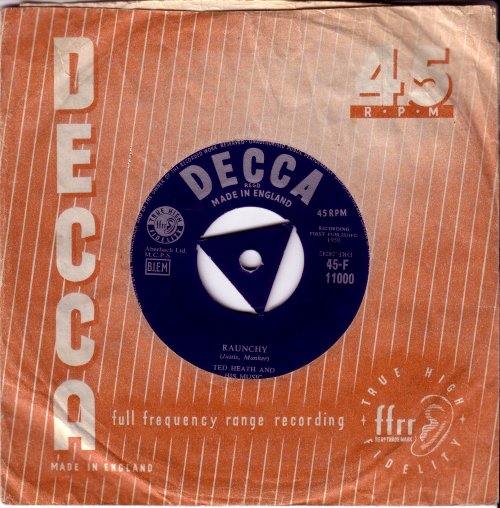
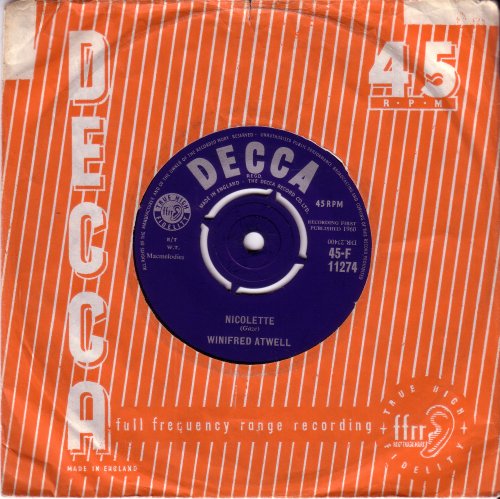
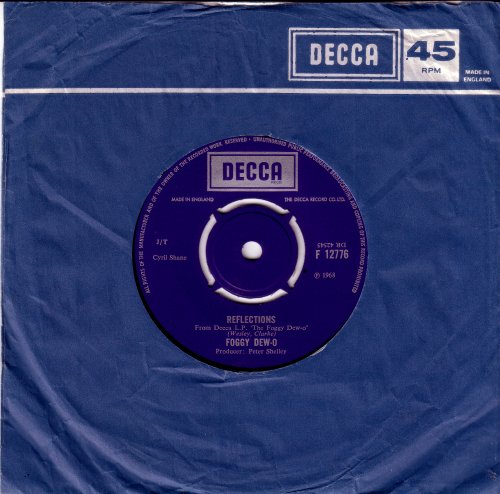
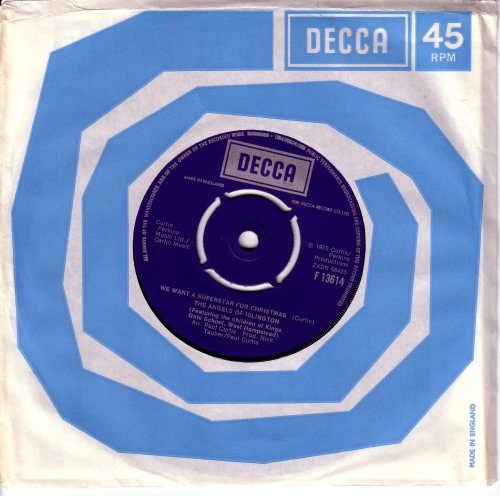
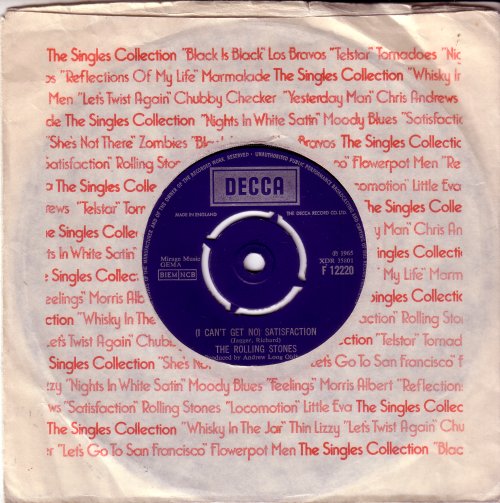
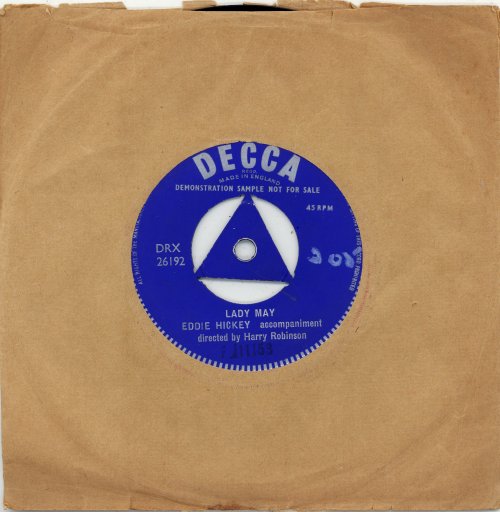
Decca was formed in 1929 by stockbroker Edward Lewis. It acquired the rights to Brunswick records and to those of several other companies, and by the mid '30s it had become of one Britain's major players in the record business. It started an American branch in 1934. The '40s saw the company introducing the revolutionary FFSS recording system, which brought a lifelike clarity to its recordings and helped it to consolidate its place as one of the best Classical Music labels. Decca flourished in the '30s and '40s with the likes of the Andrews Sisters and Jimmy Dorsey; Tommy Steele, Max Bygraves and Winifred Atwell, among others, kept the pot boiling through the 50s; while the company's major recording artists in the '60s included Billy Fury, the Bachelors, Tom Jones, Engelbert Humperdinck and the Rolling Stones. The '70s, however, were years of decline. Some big names left, others lost their appeal, and eventually only the Moody Blues remained as a reminder of the times when Decca could boast a stable of world-famous artists. The company's ratio of hits to issues was regrettably low, and when Ken East moved from EMI Australia to become managing director (in October 1974) one of his earliest moves was to cut back on the number of singles issued, on the grounds that "Quantity is no substitute for Quality" ('Music Week', 23rd December 1974). East moved on after a year, to join Motown as international vice president. Decca scored one important 'first': it issued the first digitally recorded LP, as reported in 'MW' of the 24th of March 1979 - it was the Vienna Philharmonic Orchestra's 'New Year's Day In Vienna'. Financial pressures grew as the decade went by, and in its issue of the 22nd of September 1979 'MW' reported that the company had been put up for sale. 'MW' of the 10th of November said that a bid from Polygram had been received and was going to be put before shareholders before Christmas. In January 1980 Sir Edward Lewis died; shortly afterwards Decca's record division was sold to Polygram, after an extraordinary general meeting ('MW', 1st March 1980). The label continues as part of the Universal Music Group.
Decca was a big company. It had its own pressing facilities, at New Malden, and its Selecta arm handled both sales and distribution. In addition to various licensed labels such as MCA, Brunswick and Chapter One there were several in-house labels under the Decca umbrella: Emerald and Rex for Irish music, London for records licensed from American labels, and Deram. Deram started off as a Pop label but changed its function in February 1971 when it took the place of Decca's short-lived album-only Progressive Music label, Nova (which was tentatively planned as 'Arcana' according to 'Record Retailer' of the 29th of January 1969). In April 1980 the pressing plant was sold to RACAL as part of Decca's electronics business; later that year it was sold on to a firm of printers, the London Design & Print Company ('MW', 26th July).
Singles were numbered in an 'F' series, starting at F-1501 in 1929; by the end of the '70s this had reached the F-13800s. At the start of the vinyl era the catalogue numbers of 45 rpm records were given a '45' prefix; this practise ceased around March 1963, presumably with the demise of the 78 rpm records. During 1960-71 quite a few singles had a '2' instead of the first figure '1'; for example, after F-13173 came F-23174, which was followed by F-13175. According to Paul Pelletier's catalogue of Decca singles these 20000 series records had export restrictions placed on them; from 1971 onwards the '20000' numbering was dropped and the prefix 'FR' was adopted for the appropriate records. In the 1956-57 period some Trad Jazz singles had a 'J' suffixed to the 'F'. Classical records had a 71000 (no prefix) series for singles. Mono Popular EPs were numbered in the DFE-6000s initially, and stereo Popular EPs in the STO-100s; from c.1962 they shared a common set of numbers, the 8500s, but kept their espective prefixes. Likewise Classical EPs were numbered in the CEP-500s (mono) or SEC-5000s (stereo) until c.1962; after that they kept their respective prefixes but shared a 5500 numerical series. Some EPs were available both in mono and stereo forms.
As far as label design is concerned, 1954 saw rather plain labels with the name in gold at the top (1) and ones with the name in silver with wide spacing (2) used in tandem, but the gold ones disappeared around March 1955. The silver ones kept on going, though a slight change happened at the end of November 1956 when the outer perimeter ring disappeared and the letters in 'DECCA' got squeezed closer together (3, 4). As can be seen, there were variations in the typeface and in the placement of the minor credits, and 'FJ' prefixed Trad Jazz singles had 'Jazz' on the label (13). The distinctive triangular centres were used until around June 1960, when the circular ones (5) took over; circular centres seem to have made their first appearance in July 1959, so there was a year's overlap. Thanks to re-pressings, popular singles can be found with both types of centre and with different label designs. From the summer of 1960 the appearance of the singles remained substantially unchanged until September 1966, when the 'boxed' logo was adopted (8); though on at least one 1965 single the 'Made in England' and 'The Decca Record Co. Ltd.' appeared in a different format (7). The same kind of boxed logos appeared on other labels in the Decca family, such as London, while the spiral sleeve design (53) extended even further, to Deram, Emerald and MCA, and helped to establish a group identity. The box label remained the same throughout the '70s, the only minor change being the appearance of an 'A' on the left-hand side from December 1976 onwards, to denote the 'A' side (9). 1980, and the move to Polygram, saw the introduction of injection moulding. Singles with injection moulded labels (16) or with 'A Decca Original' in a rosette on the right (16) are from the 1980s, regardless of the year that is on them - I don't usually put examples from the '80s on this site, but these two have been known to cause confusion.
There were occasional variations from the norm during the '60s and '70s. The orange label with the boxed logo (15) belongs to a 'Demand Performance' series, which came out in January 1969; some records in the series were issued on a similarly-coloured London label. The white label with the blue box (10) seems to have appeared on at just one record, aimed at the disco market; it is shown here by courtesy of Robert Bowes, who also supplied scans 46 and 47. Every now and again the label design which had appeared on 78 rpm records was used for reissues, albeit not in its original gold-on-mid-blue colouring. During 1978-79 it featured on three short series of reissued singles in a silver-on-red colour (12) and, in one instance, in brown-on-cream (13). This brown-on-cream label had also featured on a modern single by the South Bank Orchestra, 'Lillee Theme' (F-13811). According to 'MW' of the 6th of May 1978 the red-labelled singles were the fruit of an agreement between Decca and Lightning Records and were primarily intended for that company - Lightning were relaunching their 'Old Gold' oldies label at that time. Decca material eventually appeared on the Old Gold label, but not until almost the end of the decade. 'Custom' labels, with a dedicated design for a specific artist, appeared every now and then in the final few years of the decade; the example shown, which appears by courtesy of James Trash of the 45Cat site, was used for records by Slaughter & The Dogs (11).
The labels of EPs resembled those of singles, and went through the same series of changes, with small differences (18-22); the series of stereo EPs from 1958-60 was marked appropriately (23). The labels of Classical records had much the same design as those of Pop ones but were coloured differently, singles being red (24-27) and EPs green (28-31). Stereo records were again marked appropiately (30, 31). The gold-on-white label (32) was a one-off, presumably intended to give a single of the Wedding March a suitably celebratory look. An 'American Series' label (33) from 1968, with records numbered in the AD-1000s, was for export only. It featured a dozen or so singles that came out on Brunswick or MCA in Britain, and was used in countries such as Denmark, Sweden and the Netherlands, presumably for reasons to do with licensing.
All Decca-group demo singles were one-sided until November 1960, the other side having a groove which gave a low tone if played; 'A' and 'B' sides each had their own demo. They came in plain brown sleeves (56). At first Decca demos had the label name in black (34); the design changed around February 1957, with the name turning silver and silver hatching appearing around the perimeter (35). Towards the end of 1957 the printed time at 3 o'clock disappeared - it was sometimes handwritten from that point - and the matrix number at 9 o'clock was split into two lines (36). The same basic design was retained when demos turned double-sided, in November 1960, though catalogue numbers replaced matrix numbers on the labels (38). A small 'A' was put on the right-hand side of the label from June 1962 (39); then from around November 1962 to September 1964 the small 'A' was replaced by a large hollow one (40, 41), though there was some overlap between the two designs. In September 1964 the little 'A' reappeared, now on the left-hand side (42), where it remained until November 1969. For much of 1968-69 singles taken from albums in Decca's 'Phase 4' series had their own kind of demo label (43). During the same period some labels advertising a corresponding Decca album were used (44). 'RR' of the 29th of November 1969 reported that a new design was being adopted for promos from that week; it resulted in striking blue-and-white labels that lasted until towards the end of the '70s (45). There were a few variations: September 1975 saw a couple of different colour schemes, with labels on two singles being red-and-white (46) and on another pair being silver-and-blue (47). At least one (reissued) single had an issue label overprinted in silver (48). Towards the end of the decade, in October 1979, the design changed to a plain white one (49). The pink-and-light-blue-halves one (37) seems to have been used for demo copies of stereo releases in the '50s and up to at least 1965. The solid-colour sleeve (53) is unusual; I'm not sure when it was used, but I would guess c.1968 if it was used in the U.K. - some sites suggest that it was for exported singles. The white one with red writing on it (55) was used on a series of re-issued - or re-promoted - singles in the 1970s. Decca had a label devoted to West African music; its products were pressed here but intended primarily for export. Some of the records, however, were described by the Decca catalogue as being available in Britain, so I have listed them on this site: see Decca (West African). I have put together a discography for the Decca label; it only covers the 1970s but it is still large, so I have given it its own page, here.


Copyright 2006 Robert Lyons.

